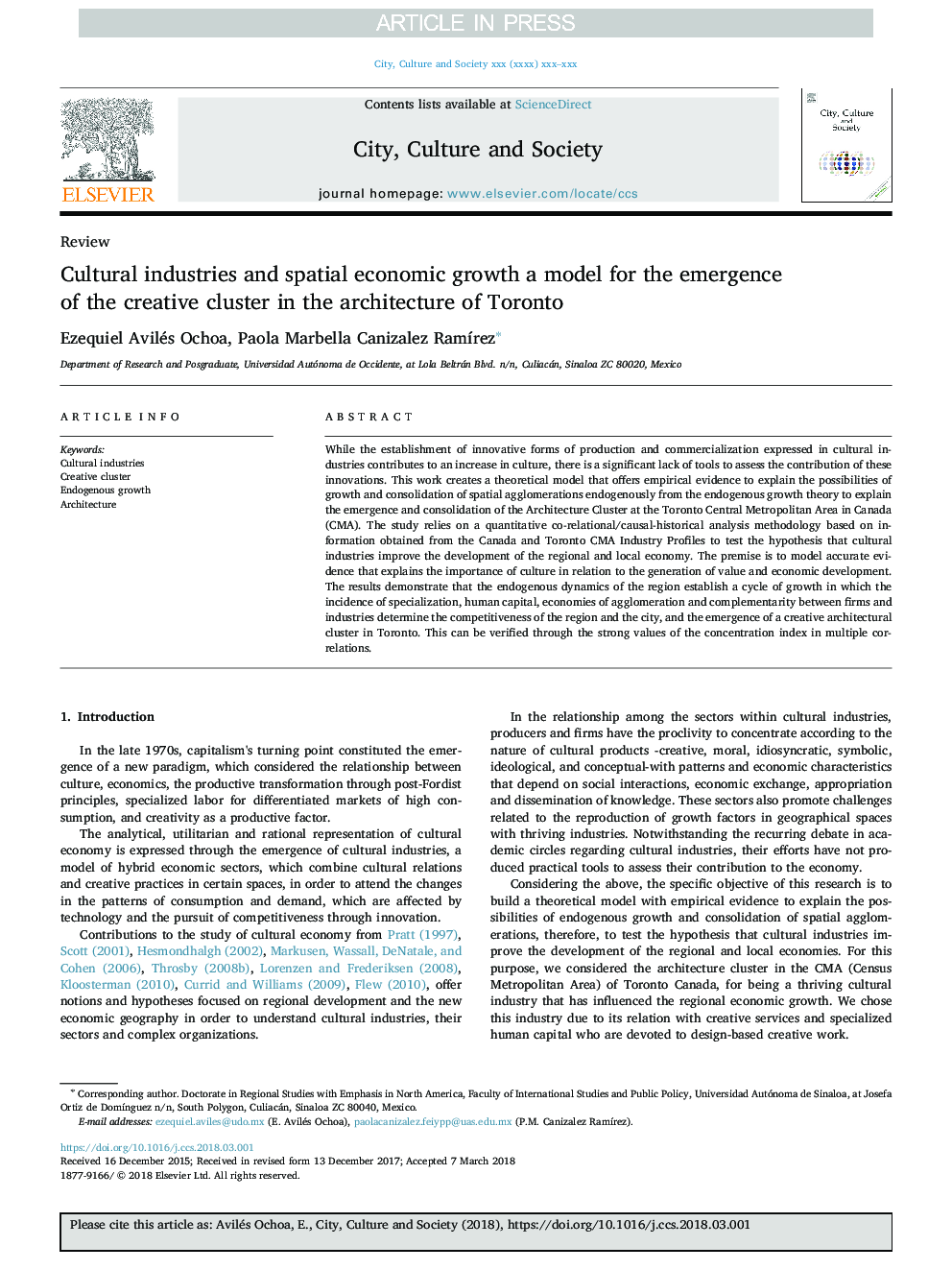| Article ID | Journal | Published Year | Pages | File Type |
|---|---|---|---|---|
| 8960804 | City, Culture and Society | 2018 | 9 Pages |
Abstract
While the establishment of innovative forms of production and commercialization expressed in cultural industries contributes to an increase in culture, there is a significant lack of tools to assess the contribution of these innovations. This work creates a theoretical model that offers empirical evidence to explain the possibilities of growth and consolidation of spatial agglomerations endogenously from the endogenous growth theory to explain the emergence and consolidation of the Architecture Cluster at the Toronto Central Metropolitan Area in Canada (CMA). The study relies on a quantitative co-relational/causal-historical analysis methodology based on information obtained from the Canada and Toronto CMA Industry Profiles to test the hypothesis that cultural industries improve the development of the regional and local economy. The premise is to model accurate evidence that explains the importance of culture in relation to the generation of value and economic development. The results demonstrate that the endogenous dynamics of the region establish a cycle of growth in which the incidence of specialization, human capital, economies of agglomeration and complementarity between firms and industries determine the competitiveness of the region and the city, and the emergence of a creative architectural cluster in Toronto. This can be verified through the strong values of the concentration index in multiple correlations.
Related Topics
Social Sciences and Humanities
Economics, Econometrics and Finance
Economics and Econometrics
Authors
Ezequiel Avilés Ochoa, Paola Marbella Canizalez RamÃrez,
